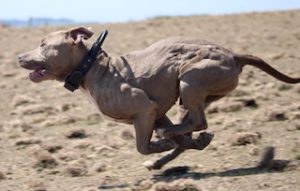
How much attention have you paid to your dogs gait recently? You may or may not know that your dog’s ‘Gait’ is their mechanics or quality of locomotion. In other words, it’s how efficiently your dog can move. Yes! There is actually a standard for this and it can by divided into eight phases, however not all dogs can perform them (as we will explain!)
Why should you care?
Understanding a dog’s gait has two main benefits. 1) It allows you to identify imbalances and poor movement dysfunctions. 2) It assists you in tracking and improving your dogs performance.
What are the types of gait?
In order to keep this practical and focused on canine fitness, we are going to describe four out of the eight types of canine gait (the main four). For the record the eight forms are 1) Walk, 2) Amble, 3) Pace, 4)Trot 5) Flying Trot 6) Canter 7) Single Suspension 8) Double Suspension.
Walking
When it comes to canine gait, walking is the initial phase and also the lowest in intensity (because it’s the least taxing). There are a number of walking gait types but the main walking gait is characterised by a pattern that involves the dog’s three out of four legs actively supporting their body at all times. During this phase, each foot is raised from the ground one at a time in a regular sequence. Walking well is essential for all dogs. Most dogs spend most of their ‘exercise’ in the form of walking in the park or round the block only, which is a shame as it’s not very challenging or stimulating for a dog (dogs were born to run). That being said there are ways you can increase the intensity of a dog walk. This can be done by altering the ground such as incline walking. More intense adjustments involve adding a weighted vest, doing drag pulls, using a weighted collar or just simply increasing the speed of the walk.
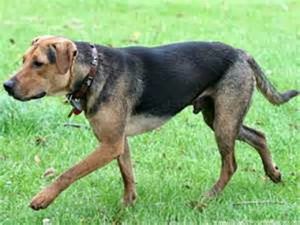
Trotting (Jogging)
A step up from walking is trotting otherwise known as jogging. It requires more energetic effort than walking which makes it higher in intensity. Canine jogging is characterised by a unique rhythmic two-beat diagonal gait in which the feet at diagonal opposite ends strike the ground together; i.e., right hind with left front and left hind with right front.
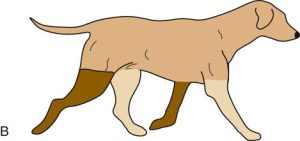
Running (Single Suspension Gallop)
As a dog moves consistently faster they naturally break out into a run, otherwise known as a single suspension gallop. Unlike the trot, the single suspension gallop is a four-time gait. The dog supports their body weight with their feet in an unsymmetrical sequence: Right Front, Left Front, Right Hind , Left Hind. (it can happen that the two limbs LF and RH hit the ground at the same time). Just after taking off from the front left foot the dog achieves suspension. Each front foot must be lifted off of the ground before its corresponding rear foot is set down. The rear foot may hit the corresponding front foot if the timing is wrong. Most dogs can achieve a single suspension gallop and it’s commonly performed through the good ol’ game of fetch!

Sprinting (Double Suspension)
The most intense form of gait is Double Suspension Gallop (also known as sprinting). Just like the Single Suspension Gallop (Run) the Double Suspension Gallop is also a four-time gait. However, the dog’s weight is not supported by the feet at all. This is the only gait in which a dog is in either in full extension or full contraction. The dog’s front legs are in full extension forward while the rear legs are in full extension rearward. Likewise, the dog’s front legs are in full contraction forward while the rear legs are in full contraction rearward. Also, the dog’s spine is fully extended as they perform a max overreach during the extension phase and their spine is fully flexed when their feet are in the full contraction phase. A double suspension gallop is a very intense form of gait and cannot be achieved by all dogs; as a result it is more common in working dogs such as greyhounds.
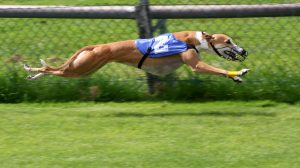
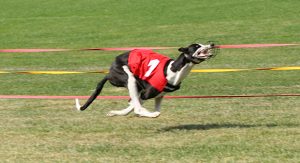
Here is a short clip in real time looking at the temp and rhythm of the canine gait. TOP TIP Pay attention to the head movement 🙂
There are a number of ways you can improve your dog’s gait. The best way is by letting them use it more! Sounds simple but as the old adage goes; if you don’t use it you lose it and this is no more truer than today. With more than half of the USA’s and UK’s dog population obese most dog’s simply cannot walk or run with ease anymore.
If you own a high energy or working dog you may want to look into investing in a dog treadmill such as a Slatmill or Carpetmill. Dog treadmills make it easier to manage high energy breeds (most need at least 2 hours of running a day)
If you have any questions just let us know at support@fitdognation.com
Keep Them FIT!
FITDOG NATION